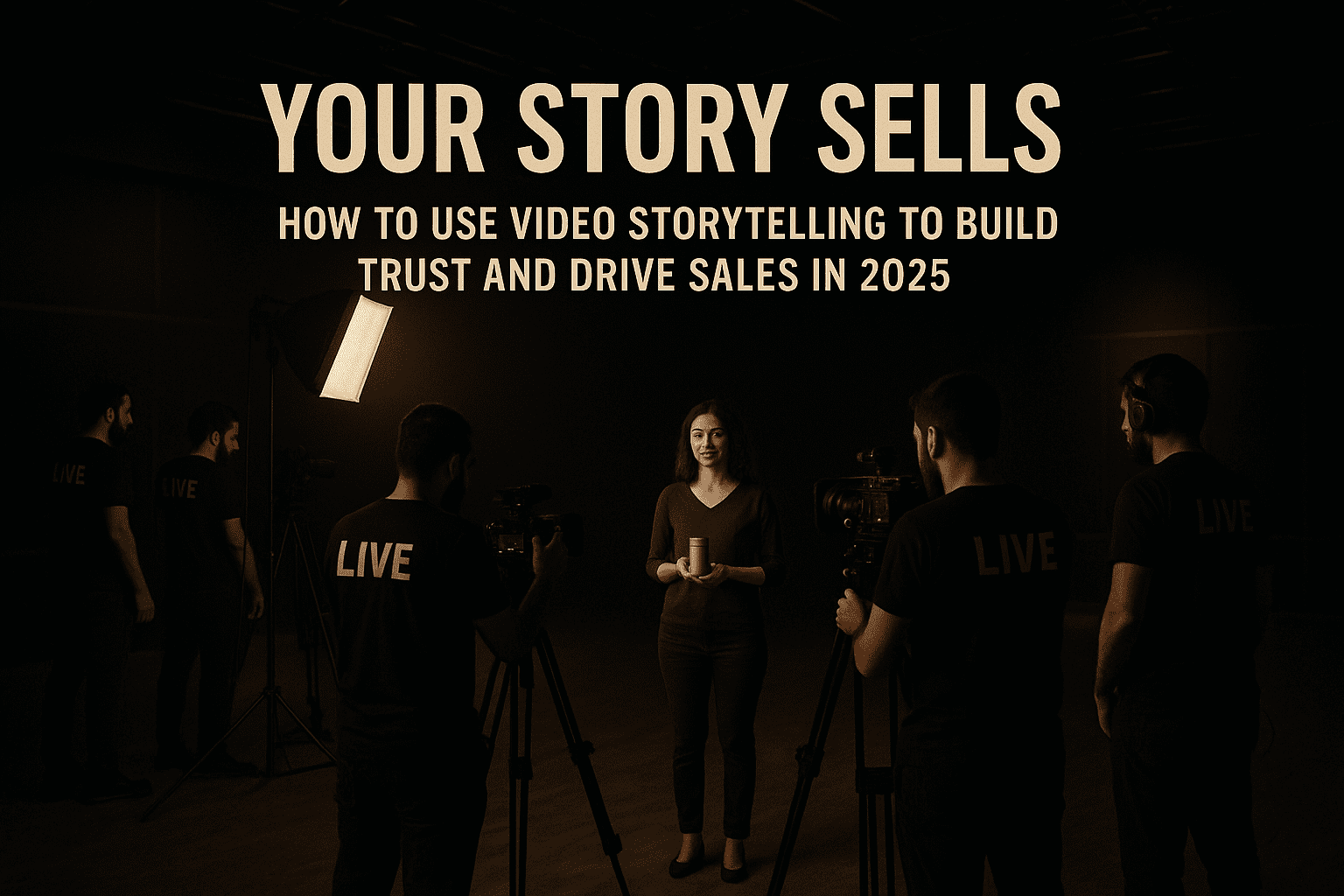
In a digital world oversaturated with content, what cuts through the noise isn’t always the most polished or technical—it’s the most authentic. And nothing conveys authenticity quite like storytelling. Especially through video. In 2025, audiences are craving realness, connection, and purpose behind the brands they buy from. If you’re not weaving stories into your video content, you’re missing out on a major opportunity to build loyalty and drive conversions.
Whether you’re a solo creator or a growing business, here’s how to turn your stories into sales assets using video.
1. Identify Your Core Brand Story
Your origin story is more than a “nice to know”—it’s a trust trigger. People buy from people they relate to. A compelling brand story shows your audience why you started, who you serve, and what makes you different.
Action Step: Script a 60-second “why we started” video. Focus on:
- The challenge or gap you saw in your industry
- What personal experience inspired you to solve it
- The mission that drives your work today
Example: “I launched my video marketing agency after seeing how many entrepreneurs struggled to translate their message into engaging content. I’ve been there, and I knew there had to be a better way.”
2. Create Customer Transformation Stories
Nothing builds credibility like proof. Highlighting real people who’ve experienced results through your service is more powerful than any stat. But it’s not just about testimonials—it’s about transformation.
Action Step: Record short video case studies using this framework:
- Before: What was their problem?
- During: What did working with you look like?
- After: What results did they see?
Use B-roll, images, or screen recordings to visually show the journey.
Stat to Know: 72% of customers say they trust a business more after watching video testimonials (Wyzowl, 2024).
3. Use Micro-Stories in Short-Form Content
Not every story needs to be long. A 15-second TikTok can tell a story when it focuses on a moment of insight, emotion, or humor. These micro-stories are perfect for boosting engagement and reach.
Action Step: Batch record 3–5 short videos that answer:
- “What’s a lesson I learned from a past failure?”
- “What’s a moment that made me proud of my work?”
- “What’s one thing I wish every client knew before hiring me?”
Use native platform text to reinforce the hook and add captions for silent viewing.
4. Incorporate Stories Into Your Sales Videos
Sales videos are no longer just feature walkthroughs—they’re mini-movies that show the viewer what life could look like after saying yes to your offer. By integrating storytelling, you add heart to your pitch.
Action Step: Build your next video sales letter (VSL) around this structure:
- Hook: A relatable moment or bold statement
- Story: How you or a client overcame a challenge
- Offer: What you’re presenting and how it helps
- CTA: Clear next step (book a call, join, purchase)
Pro Tip: Film in a personal environment (like your office or a favorite local space) to create an authentic, grounded vibe.
5. Build a Video Library of Evergreen Stories
Over time, your business will accumulate stories—client wins, pivotal decisions, behind-the-scenes milestones. Capturing and organizing these stories in a video library helps you repurpose them for ads, emails, content, and launches.
Action Step: Create folders for each type of story:
- Founder stories
- Client stories
- Brand values in action
- Behind-the-scenes moments
- Industry opinions or hot takes
Use Google Drive or Frame.io and tag videos with context and use cases.
In 2025, storytelling isn’t a nice-to-have—it’s your competitive edge. It humanizes your brand, connects you with your audience on a deeper level, and creates memorable experiences that stick long after the video ends. People don’t just want to know what you do—they want to know who you are and why it matters.
Your Move: Choose one of the five story types above and film it this week. Post it with a caption that invites viewers to respond or share their own story. Because when you show up with your story, your audience sees what’s possible in theirs. And that’s what drives action.


